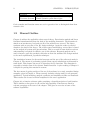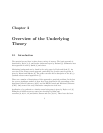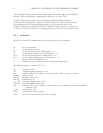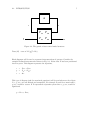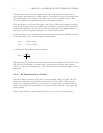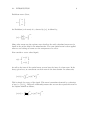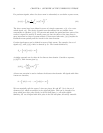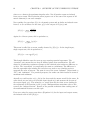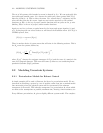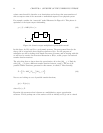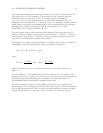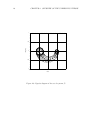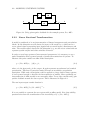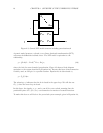
2.1. INTRODUCTION 11
signals. Strictly speaking, signals in H
2
or H
⊥
2
are not defined on the ω axis. However
we usually consider them to be by taking a limit as we approach the axis.
A slightly more specialized set is RL
2
, the set of real rational functions in L
2
. These are
strictly proper functions with no poles on the imaginary axis. Similarly we can consider
RH
2
as strictly proper stable functions and RH
⊥
2
as strictly proper functions with no
poles in Re(s)< 0. The distinction between RL
2
and L
2
is of little consequence for the
sorts of analysis we will do here.
The concept of a unit ball will also come up in the following sections. This is simply the
set of all signals (or vectors, matrices or systems) with norm less than or equal to one.
The unit ball of L
2
, denoted by BL
2
, is therefore defined as,
BL
2
=
x(t)
x(t)
2
< 1
.
Now let’s move onto norms of matrices and systems. As expected the norm of a matrix
gives a measure of its size. We will again emphasize only the norms which we will
consider in the following sections. Consider defining a norm in terms of the maximum
gain of a matrix or system. This is what is known as an induced norm. Consider a
matrix, M, and vectors, u and y,where
y=Mu.
Define, M,by
M=max
u,u<∞
y
u
.
Because M is obviously linear this is equivalent to,
M =max
u,u=1
y.
The properties of M will depend on how we define the norms for the vectors u and y.
If we choose our usual default of the Euclidean norm then M is given by,
M = σ
max
(M),



